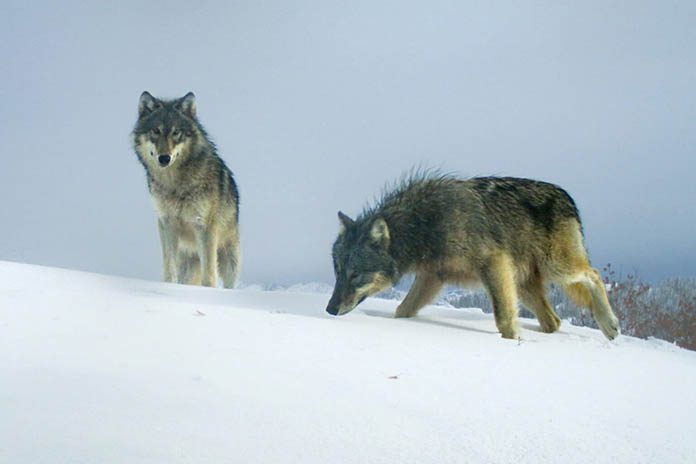
By Alex Baumhardt/Oregon Capital Chronicle
Oregon’s gray wolf population did not increase last year due in part to a large number of wolves killed by people, causing concern among conservationists and Oregon Department of Fish and Wildlife officials.
The latest Annual Wolf Report found the population remained steady at 178 wolves, marking the first time in eight years that their numbers didn’t increase. Typically, the population has grown by 6% a year. Among the 36 wolf deaths in 2023, 33 were caused by people. The state sanctioned the killing of 16 wolves following livestock deaths and 12 were killed illegally, the report said.
“The amount of poaching and other suspicious deaths is alarming, impacts our conservation goals and could affect our ability to manage wolves in Oregon,” Bernadette Graham-Hudson, the agency’s wildlife division administrator, said in a news release.
The count is based on wolf tracks and other evidence, including appearance on wilderness cameras, and might be too low, officials said. It also doesn’t include the 10 wolves that were transported from Oregon to Colorado in December to help reestablish a wolf population there.
In addition to the steady numbers, the count cited two fewer wolf packs and successful breeding pairs in 2023 than in 2022 due to poaching.
Gray wolves are listed as endangered under the federal Species Act in most of central and western Oregon, and four of the illegal killings took place in places where they are federally protected. Seven of the wolves that were illegally killed were poisoned. The state wildlife department, Oregon State Police and the U.S. Fish and Wildlife Service are investigating the poisonings and offering a $50,000 reward for more information on three of them. Other deaths were caused by vehicles, cancer, natural causes or undetermined causes. One was shot by a livestock owner in an act of self defense, according to the report.
Environmentalists criticize state
Conservationists criticized Oregon’s fish and wildlife agency for allowing 16 wolves to be killed in 2023 for what the agency considered to be chronic livestock depredation by wolves. That is more state-sanctioned wolf killings than in any year since record keeping began in 2008, according to Amaroq Weiss, a senior wolf advocate at the nonprofit Center for Biological Diversity.
Weiss said in a news release that research shows that allowing for the legal killing of wolves leads to increases in illegal killing.
“Conservation groups have repeatedly raised this concern with the state wildlife agency, but they ignored us. Last year’s population decline is the shameful result,” he said.
Spokespersons for the agency said in a release that sanctioning the killing of wolves when non-lethal measures fail to prevent livestock predation is key to long-term wolf conservation because it reduces the burden on livestock owners and encourages them to collaborate with regulators. The state also offers compensation to livestock owners who’ve lost animals to wolves. The compensation program paid out more than $477,000 to livestock owners in 11 counties in 2023 for their animal losses to wolves, agency officials said.
Most gray wolves in Oregon are in the northeast of the state. It’s also where most instances of wolves attacking livestock occur. The number of such attacks in the area rose 27% in 2023 compared to 2022. Statewide, however, the number of livestock killed by wolves fell last year.
Owners with livestock killed by wolves must first implement non-lethal measures to prevent further deaths, such as deploying ground and aerial monitoring and moving cattle outside of their normal pasture areas to avoid conflicts. If these methods fail, owners can seek permission to kill the animals that return to prey on livestock.
Oregon’s wolves are moving into broader territory and pushing farther west, the report said. Oregon’s gray wolf population may have reached its ecological limit in the eastern third of the state, according to state biologists, who said packs will probably spread out to the west and south in greater numbers.
This story first appeared in the Oregon Capital Chronicle.








